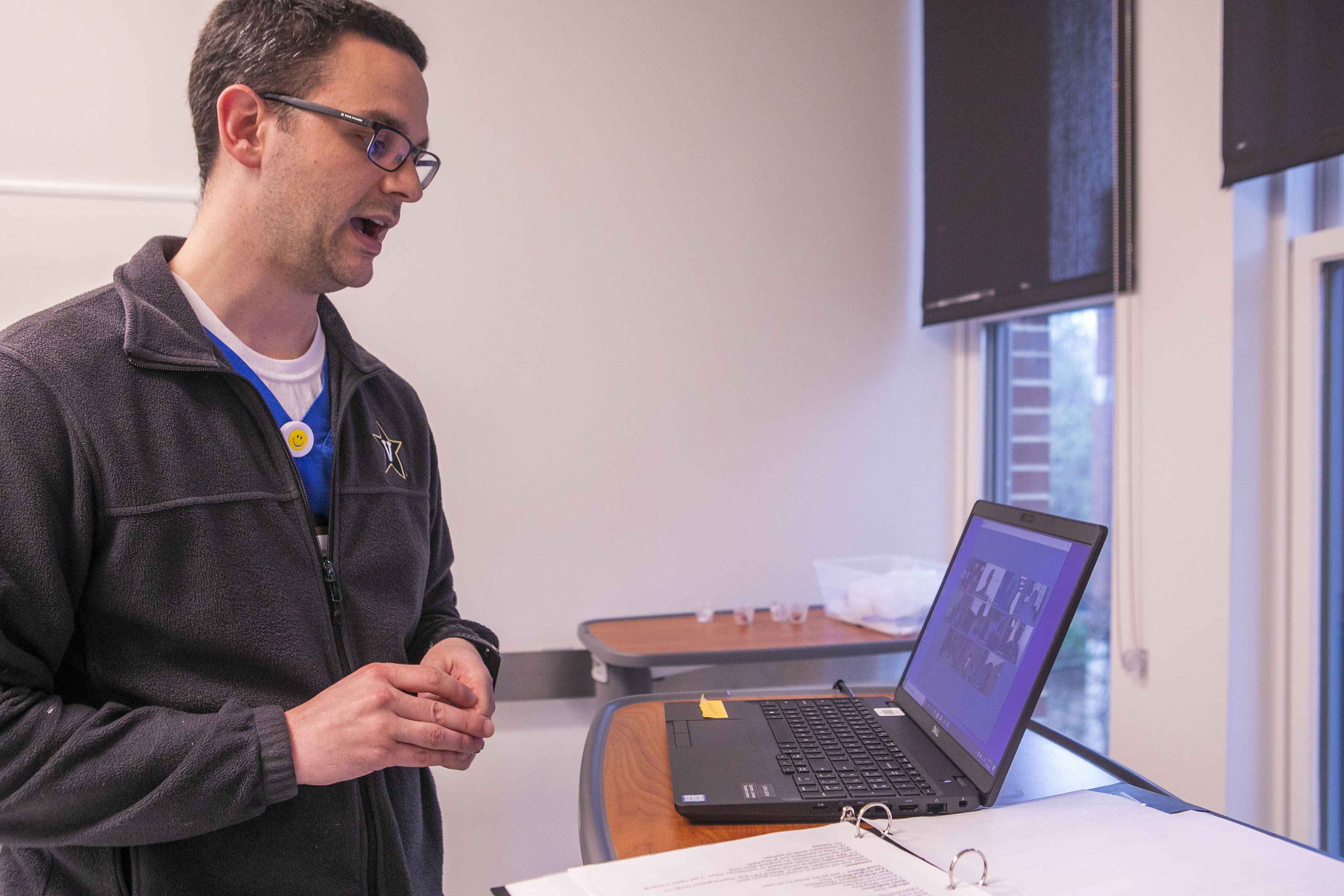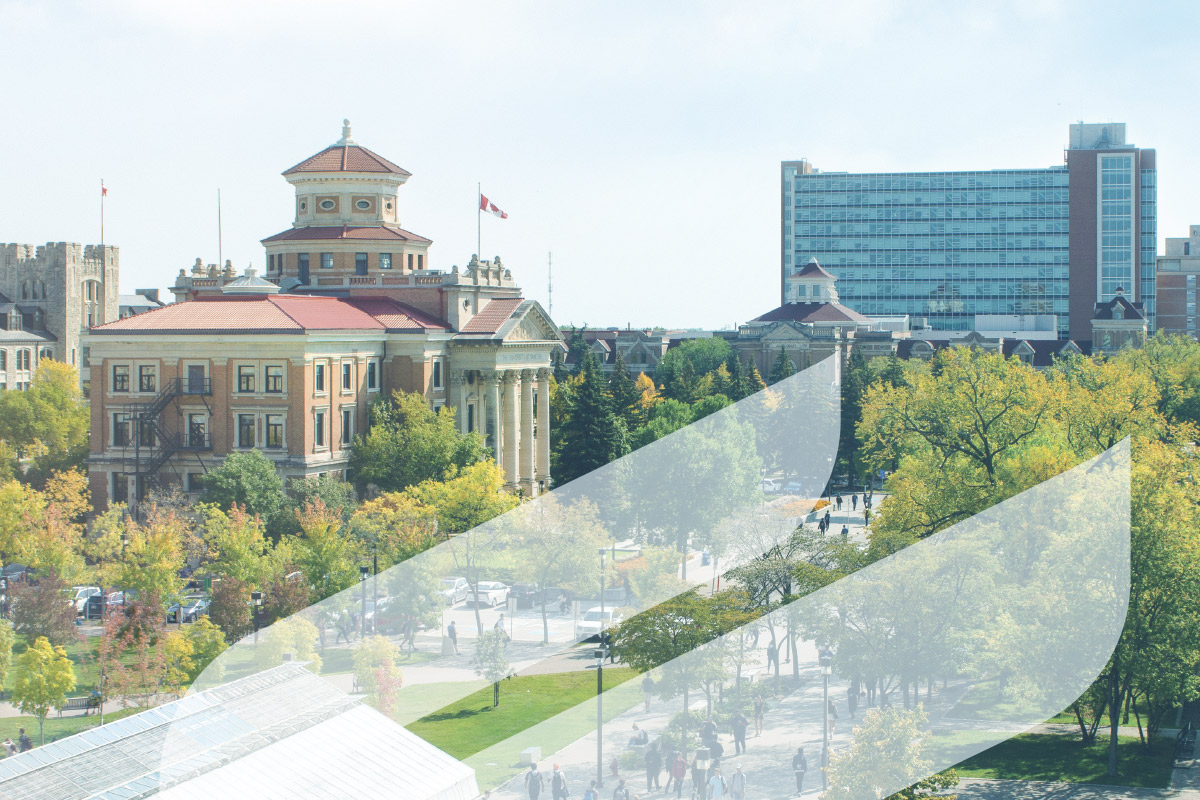That was the challenge facing Mary Ann Jessee, director of PreSpecialty education at Vanderbilt University School of Nursing, and the 30-plus faculty who instruct those first-year (prelicensure) nursing students in patient care.
With the spread of COVID-19, the students’ clinical education in hospitals, clinics and other facilities was suspended in mid-March. VUSN was unwilling to postpone clinical learning and possibly delay the students’ path to becoming advanced practice registered nurses. So faculty got creative.
“For a couple of weeks, we had been determining what we would do if students weren’t able to be in the clinical setting,” Jessee said. “The course coordinators, Erin Rodgers and Heather Robbins, and I brainstormed what would it look like to do a virtual experience for students that would enable them to experience the same clinical learning. Could we use the Simulation Lab and have the students participate by telling someone in the lab what to do?” The faculty consulted VUSN Simulation Lab Director Jo Ellen Holt, who responded enthusiastically with suggestions.
The result was a virtual live-streamed learning experience with students using their instructors and Simulation Lab staff as avatars to interact with the school’s high-fidelity nursing mannequins and provide patient care.
“One instructor acted as the student’s eyes, ears and hands while another observed and coached, just as they would do with actual patients in the clinical setting,” Rodgers said. “Students instructed their avatar on what to do, step-by-step. The avatar reported the results, and then the students as a group evaluated whether that skill was implemented correctly and discussed the outcome.”
The students joined the simulations via video conferencing, working in the same six-student cohorts as for their in-person clinical learning. Each student experienced directing the avatar and discussed the scenario with their group.
“What we’re trying to mirror is the typical direct patient care experience and clinical conference, but in a virtual format,” Jessee said. “We had to determine how to recreate those patient interactions, and in those, ensure that students had the ability to conduct assessments, prioritize patient needs, make decisions about care, implement that care and evaluate the results.”
Throughout the simulation, the instructor is observing and coaching, as they would with actual patients. “In the virtual clinical experience, the faculty member can’t see the student doing the assessment or preparing for safe medication administration. The student needs to explain it before the avatar acts so the faculty can see that the student knows how to do it. This allows faculty to assess the same competencies in the virtual simulation as in the clinical setting.”
The School of Nursing’s PreSpecialty program is for students with bachelor degrees in a field other than nursing. They spend 12 months in intense generalist nursing learning, then spend 12-18 months gaining specialty education. In addition to directing the PreSpecialty level, Jessee serves as assistant dean for academics, generalist nursing practice.
The virtual clinical simulation is only one strategy that the PreSpecialty faculty are using for clinical skills. The school also uses the Virtual Healthcare Experience portal, developed by Canadian schools of nursing to engage students in highly complex scenarios using actors, as well as materials from the Institute for Healthcare Improvement, ReelDX videos and faculty-created case studies.
VUSN PreSpecialty clinical faculty created multiple virtual clinical simulations to support pediatric, adult, obstetric and psychiatric-mental health care. Students whose clinical experiences did not require the simulation lab participated in similar virtual situations within a simulated home or office setting.
Before starting the virtual curriculum, the School of Nursing consulted the Tennessee Board of Nursing and the Commission on Collegiate Nursing Education (CCNE) to determine how the simulations would relate to the students’ future licensing. “They sent us confirmation that simulation can be used one-to-one in place of direct patient care,” Jessee said. “Every hour that students are logging in these virtual activities counts toward their preparation for the national council licensure examination, NCLEX.”
Student reaction has been positive. “Students are amazed that we created these things. They’ve had great experiences—it’s been intense and challenging—and they’ve had good team work,” Jessee said. “One student told her instructor that she felt the virtual clinicals were valuable and that they’d helped her with exams in other courses.”
One student gave feedback not on the clinical experiences but on her reaction to how VUSN has handled the COVID-19 crisis. “I have felt supported and seen by you, and all of my instructors in the past weeks…Earlier this week, our clinical group was discussing how, despite all the craziness going on in the world, we feel least concerned about our education and trajectory because of the incredibly talented faculty and resources at VUSN. Thank you!”
The faculty also judged the simulations successful. “We were able to develop meaningful, realistic virtual experiences that would provide students with opportunities to learn and demonstrate competency in essential clinical thinking skills,” Jessee said.
Although she doesn’t know of other schools that have created similar virtual clinical simulations, Jessee said that nursing schools across the country are developing various creative learning experiences. “We’re all working to enable on-time graduation of nurses to fill vacancies in the nursing workforce,” she said. “Our students won’t miss a beat.”
“It’s been stressful for students and added an extra workload on faculty but it has been so worth it to see the learning realized by the students,” she said. “It’s really rewarding.”
Original post https://alertarticles.info




